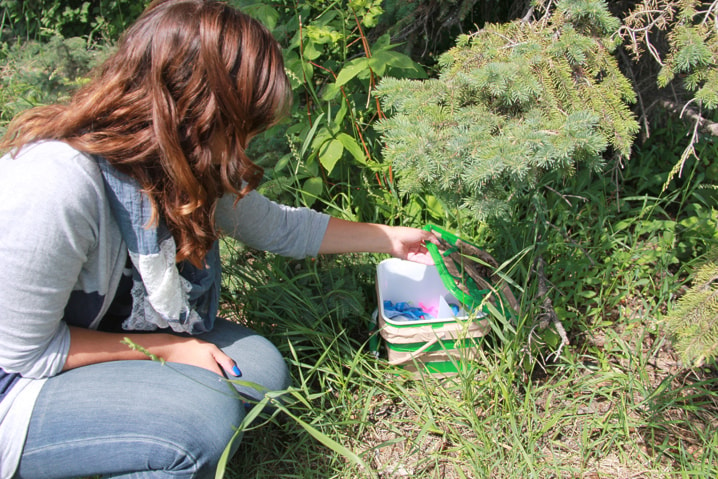Release the frogs!
That’s what the Red Deer River Watershed Alliance will be doing later this month. These green amphibians however are not the living, ribbiting kind.
They are called Cachekinz, also known as “trackables” or “travel bugs.” The are key chain-like, two-dimensional, aluminium frogs, each with their own name and ID number.
They are part of the organization’s new geocaching endeavor.
Geocaching — real-world treasure hunting for hidden containers using GPS devices — is an increasing popular activity for people around the world, said Alexandra Zanussi, the summer outreach student with the watershed alliance.
Cachekinz are geocaching items with a mission: to travel the world.
Red Deer watershed alliance frogs will be trying to get to Lake Tahoe in New Zealand, the Nile River in Egypt, China’s Three Gorges Dam, England’s Thames River, the Dunvegan bridge over the Peace River, Churchill, Man., Niagara Falls, the Hoover Dam and Lake Titicaca in Peru.
“We were bouncing around ideas about things we could do to spread more information about the watershed and my friend had told me about these travel bugs so I thought it’d be a fun, community thing,” said Zanussi. “It’s all about adventure. And kids love it — teens, university students, older adults. It’s all ages.”
Five different geocaches — camouflaged buckets — have been made up, each containing one or two frogs and a number of other goodies, such as pens, stickers and toys.
These will be hidden around the region over the coming weeks. Interested treasure hunters can sign up for free at geocaching.com or download the mobile app to get started. They can then log in their frogs’ IDs so Zanussi can track their globe-trotting progress.
“One travel bug found in a geocache somewhere in Alberta had to get to Rome, and it made it there in four days because someone knew someone headed there.
“That’s what I want to see happen. It would be the ultimate to see all of our frogs make it to their destinations and back to Red Deer again by the end of summer,” said Zanussi.
When you find a geocache, the idea is to take something and leave something else in return, she added.
There are around 550 geocaches lurking in all kinds of nooks and crannies in Red Deer already and 2 million worldwide.
The Alliance tried a different geocaching project about four years ago but this one is more intensive and is also the first time trackables are being used, said Zanussi.
Jeff Hanger, the executive director of the local watershed alliance, said the geocaching initiative is about spreading information to make more people aware of the watershed and the importance in sustainability.
Each geocache also contains information sheets on the local watershed alliance and components to the Red Deer Rover watershed such as wetlands, riparian buffers and uplands.
“If one of these frogs is released and goes to the Nile, we’re actually connecting with people tied to great water sources and different solutions to different problems,” Hanger said. “It’s action on a global level . . . It’s quite exciting.”
The public can follow each frog’s journey via the watershed alliance’s website, social media and newsletters.
For more information, visit www.rdrwa.ca or email summeroutreach@rdrwa.ca.
rfrancoeur@www.reddeeradvocate.com
